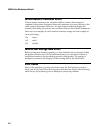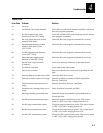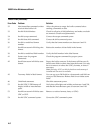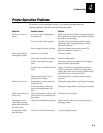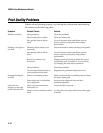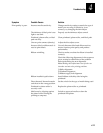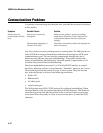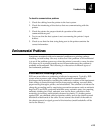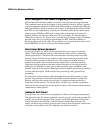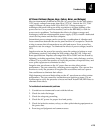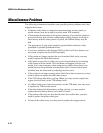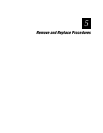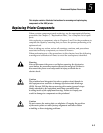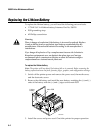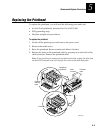
3600 Printer Maintenance Manual
4-14
Electromagnetic and Radio Frequency Interference
Noise induced in interface cables can result in the printer receiving false data.
This condition may cause the printer to skip printing a label or lockup. Sources
of electromagnetic interference (EMI) and radio frequency interference (RFI) are
radio transmitters, ignition systems, and relays. To eliminate the effects of EMI
and RFI, use low capacitance, twisted pair, shielded cables. Route cables away
from sources of EMI and RFI such as large inductive motors or fluorescent
lighting ballasts. Do not run cables near AC power lines. If communication
cables must run near AC power lines, cross them at 90 degree angles. Eliminate
ground loops; they act as receiving antennas for RFI. Limit the number of
breaks (connectors) in the cable. It is possible to use a power line monitor, such
as the BMI 4800, to test for noise on the interface cable.
Ground Loops Between Equipment
Ground loops pick up RFI as well as generate their own noise in interface
cables. The recommended wiring of the interface cable calls for connecting
chassis ground (pin 1) between the host computer and the printer to ensure
that the chassis of both devices remains at the same electrical potential in the
event of a faulty ground in either device. This safety precaution will save
people from electric shock in the situation where they touch both the host
computer and the printer at the same time while there is a faulty ground in
either device. With this wiring, you would normally expect problems with
ground loops, but the printer, chassis ground, and signal ground are connected
to each other through a 10kΩ resistor, thus providing some ground loop
immunity.
If connections in the interface cable described above are discovered to cause
ground loop problems, disconnect the shield from the backshell at only the
printer, and sever the chassis ground (pin 1) connection between the host
computer and the printer. To ensure safety, double your efforts to guarantee
that both the host computer and the printer make a solid electrical and physical
connection to earth ground.
Inadequate Earth Ground
Poor grounds can cause fuses on equipment to blow and damage components.
The ground in the AC power receptacle must be a good, solid earth ground. Do
not rely on conduit for ground. The ground rod should penetrate the earth at
least 8 feet below the frost line. The soil should contain clay minerals; dry,
sandy soil does not provide a good ground. Ensure that all ground connections
from the service panel to the AC receptacle are solid and secure.



